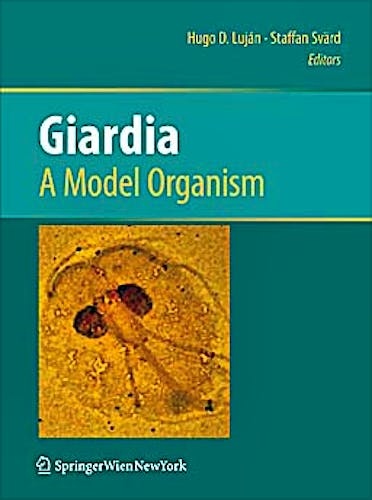

No hay productos en el carrito



Giardia. a Model Organism
Lujan, H. — Svärd, S.
1ª Edición Julio 2011
Inglés
Tapa dura
350 pags
1000 gr
null x null x null cm
ISBN 9783709101971
Editorial SPRINGER
ABOUT THIS BOOK
Giardia is a relatively simple eukaryotic microbe, causing acute and chronic
diarrhea which has been used as a model to understand complex biological processes
occurring in eukaryotic cells. Further, due to its parasitic lifestyle, Giardia
is an excellent system for the study of the mechanisms of adaptation and cell
differentiation from the perspectives of molecular and cell biology. This book
presents a comprehensive review of the current state of knowledge regarding
all aspects of Giardia’s biology, including epidemiology, cell and molecular
biology, genetics, pathogenesis, diagnostics, and clinical treatment. It was
written by internationally renowned authors, the leading researchers in the
field including several chapters with techniques and resources available for
the study of this microorganism. Questions that need to be addressed to fully
understand the molecular mechanisms of the parasite as well as the cause of
its pathology are presented. Furthermore, Giardia’s biology is compared
with that of other parasites in relation to their complexity. This volume is
an indispensable resource for researchers working with this parasite. It is
a “must” for libraries and the bookshelves of everyone interested
in the biology of parasites and early-branching eukaryotes.
Content Level » Research
Related subjects » Animal Sciences - Microbiology - Virology
TABLE OF CONTENTS
Preface and Introduction Section I: Taxonomy and Epidemiology of Giardia 1-
Taxonomy of Giardia species 2- Epidemiology of Giardia lamblia 3- Waterborne
and Environmentally-borne Giardiasis 4- Giardia in Pets, Farm animals and zoonotic
potential Section II: Molecular Biology of Giardia 5- Genomics of Giardia lamblia
6- Proteomics and Glycomics of Giardia lamblia 7- Lipidomics of Giardia lamblia
8- General Giardia Metabolism Section III: Cellular Biology of Giardia 9- Ultrastructure
of Giardia during growth and differentiation 10- Cell cycle regulation and cell
division in Giardia 11- The Giardia Mitosomes 12- Signal transduction pathways
in Giardia 13- Transcription and Recombination in Giardia 14- Intracellular
protein trafficking 15- The RNAi Pathway in Giardia 16- Antigenic Variation
in Giardia 17- Translation and RNA processing in Giardia Section IV: Pathology,
treatment and diagnostics of Giardia and the host immune response 18- Interaction
of Giardia with host cells 19- The Giardia cytoskeleton 20- Pathology and clinical
manifestations of Giardiasis 21- Immunology of Giardiasis 22- Treatment of Giardiasis
and Drug Resistance 23- Giardia Metabolism and Drug Development 24- Vaccination
against Giardia 25- Diagnostics of Giardia infections Section V: Methods for
Giardia Research Methods for Giardia culture and differentiation in vitro Methods
for Giardia synchronization Methods for Giardia transfection and gene expression
Current tools to study Giardia in the lab
AUTHORS & EDITORS
Dr. Luján received his Ph.D. in biochemistry from the School of Chemistry,
National University of Córdoba, Argentina, in 1991. Until 1996 he performed
postdoctoral work in the United States at the National Institute of Allergy
and Infectious Diseases, National Institutes of Health. He is a full professor
of biochemistry and cell biology in the School of Medicine, Catholic University
of Córdoba, Argentina. He also is an independent investigator at the
National Council for Science and Technology of Argentina. Dr. Svärd received
his PhD in Microbiology at Uppsala University, Uppsala, Sweden in 1995. He performed
postdoctoral work in United States at UCSD, San Diego followed by six years
at the Karolinska Institute, Stockholm, Sweden. Currently he is a professor
of Eukaryotic Microbiology at Uppsala University.
© 2025 Axón Librería S.L.
2.149.0